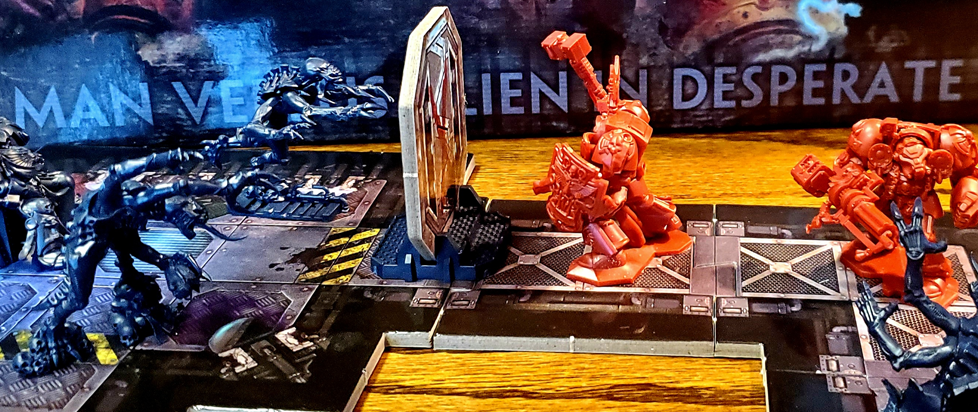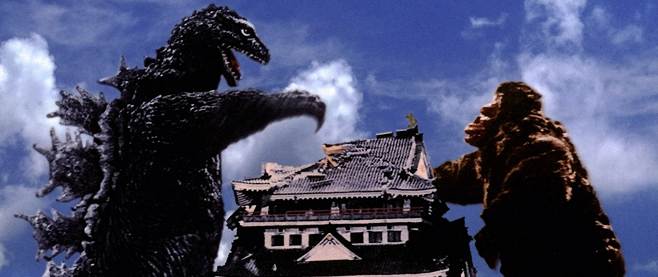
They’re Coming Out of the Goddamn Walls: Reliving a Moment with Space Hulk
I see board games in the store and they always look so cool and then I buy them and bring them home, I’m so excited to open them, and then I play them, like, twice… This column is dedicated to the love of games for those of us whose eyes may be bigger than our stomachs when it comes to playing, and the joy that we can all take from games, even if we don’t play them very often.
There was a period of time when the general consensus in nerd circles was that Aliens was that rare sequel that was actually better than the original. You can see this moment both represented and lampooned in Scream 2. In recent years, it has become de rigueur to swing the pendulum back the other way and suggest that, not only is Aliens worse than its predecessor, but that it is, in fact, worse than some of the other movies in the series.
I’m not here to litigate the finer points of this debate, not least because this is (ostensibly) a column about board games. Rather, I’m here to say that I saw Aliens before I saw any of the others – indeed, when I saw it, I had no idea that it was a sequel to anything – and it left a mark.
Not too long after that, I got heavily into Warhammer – or, at least, into the idea of Warhammer – which means that I always wanted to play Space Hulk, their very expensive board game that was basically just Aliens set in Warhammer 40K’s war-torn 41st millennium.
Space Hulk was one of the earliest examples of a type of board game that we have a lot of now: asymmetric skirmish games. One player took control of the alien Genestealers, one the Space Marines (think the xenomorphs and, well, space marines of Aliens). Each player had a different victory condition and different ways that their troops played well. (Genestealers got a lot of troops in comparison to their Space Marine opponents, while the Space Marines were, for instance, capable of shooting at all.)
It also introduced another factor that wasn’t entirely novel at the time but has become increasingly common in the years since, which is a hidden mechanic in how the two sides interact. Genestealers didn’t enter the game as models, but rather as “blips.”
These “blips” could represent anywhere from 1-3 Genestealers (or even more, in some versions of the game) with the total number not revealed until they were right on top of one of the Space Marines. I probably don’t have to keep pointing this out, but these “blips” were, pretty obviously, meant to recreate the motion detector sequences from Alien/Aliens.
As a kid, I was never able to afford the pricey and overstuffed box that Space Hulk came in, and these were the days before the internet existed as we know it now, so I never really knew how the game actually played. There were no YouTube demos, no Wikipedia entries.
I think I imagined a game that was more like a dungeon crawler on a derelict spaceship (the eponymous Space Hulk), where a player controlling Space Marines in heavy armor made their way cautiously down dark and dripping corridors, opening a blast door with no way of knowing what alien horror might be lurking on the other side.
While the game, in execution, does try to generate that kind of suspense, however, it’s not at all that kind of game. There is no opening of blast doors and revealing new rooms. The board is laid out, in its entirety, when the game begins, based on the mission you are playing, chosen from a variety in a Mission Book that comes in the box. The first edition of the game did, eventually, introduce a handful of expansions, including rules for playing the game solo, as Space Marines competed against the board.
Yet, the images that sold a young me on the dream of this game are still those dark hallways and those heavy doors and the scenarios they conjure, represented by, in the fourth edition of the game that I finally got as an adult, beautiful debossed floor tiles that, when laid out on a table, create a convincing and transportive picture of the industrial halls of a derelict freighter.
It is difficult, for me at least, to separate the game itself from that dream, solidified by glossy magazine photos of massive Space Hulk boards set up to create seemingly-infinite labyrinths of claustrophobic hallways. The dream of the dungeon crawler in space will always live on, even if that’s not what the game actually is.
The fourth edition of Space Hulk was released in 2014 and remains, to date, the last edition, having gone rapidly out of print, as Games Workshop’s various spin-off games are apt to do. Space Hulk wasn’t the only game from GW to attempt this sort of thing, however. There was also Space Crusade, a 1990 GW/Milton Bradley joint (see also HeroQuest) and 1992’s Tyranid Attack, which moved the action to the (literal) bowels of one of the Tyranids’ living ships – complete with brightly-colored dungeon tiles of gross living spaceship innards.
More recent is 2016’s Deathwatch: Overkill, which replaces the constricted hallways of Space Hulk with larger board tiles that represent the platforms of a derelict mining planet. The artwork is no less atmospheric, even while the quarters are a bit less cramped.
Indeed, while it doesn’t bear the Space Hulk branding and it mixes up the force going against the Genestealers (Space Marines of the carefully-chosen Deathwatch, this time around, rather than Blood Angels in heavy Terminator armor; distinctions that are largely meaningless to anyone who isn’t saturated in Warhammer 40K lore), Deathwatch: Overkill is, in most all other respects, a fifth edition of the venerable game.
Just as Aliens was my first exposure to the franchise, Space Hulk was the first time I had ever seen anyone try to translate it to the tabletop – even though it wasn’t the first time an effort had been made. In fact, there were even board games coming out contemporaneously with the film’s theatrical release. It was, however, far from the last game to attempt to do so.
Especially in recent years, as the market for these types of board games has exploded and the days when a game like Space Hulk could dominate an entire subgenre are long behind us, there have been numerous attempts – both officially-licensed and otherwise – to port the Alien franchise onto the table. There is an Alien roleplaying game and a wide variety of licensed board games, as well as popular unlicensed “homages” like 2018’s Nemesis, some of which, most likely, represent the action better than Space Hulk ever could.
For that kid who watched Aliens without knowing what it was, who got into Warhammer more as a wistful hope than as a reality, though, Space Hulk represents two Venn diagrams overlapping in a uniquely synchronous way, and owning a copy of the game is the culmination of a dream, even if I only ever play it, like, twice…





